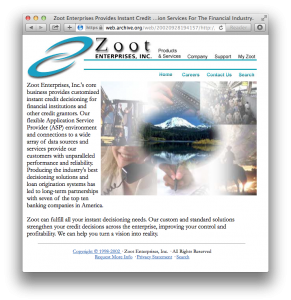If you are not familiar with The Butterfly Effect, it is the “sensitive dependency on initial conditions in which a small change at one place in a deterministic nonlinear system can result in large differences in a later state.”
At this point you may be asking, so what does digital email lifecycle marketing have to do with butterflies? Well, if you think about your consumer lifecycle marketing initiatives, there’s a lot of cause and effect at play. One little flutter of a marketing miss or a bad consumer experience can set into motion a digital downward spiral of engagement rates across channels.
The consumer lifecycle has become more dynamic and cross-channel than ever, increasing the opportunities for butterfly effects to ripple through every interaction.
So what are some of the top opportunities to ensure your email marketing efforts are “fluttering” in support of your marketing objectives? Here’s a quick fly-by:
Acquisition and Onboarding: Bring new subscribers and customers onboard by leveraging contextual clues based on acquisition source, early actions and other behavioral targeting. Many marketers miss the opportunity to gather data early in the relationship. This is prime time to set the stage for an ongoing relationship by getting to know the consumer. Provide a user-friendly way to share data by registering a click within an email as an affinity data attribute and use it to fuel the message content. This early contextual cause-and-effect focus will garner more positive results that a generic approach across the subscriber base.
Mobile Experience: Consumers want what they want when they want it, so it’s imperative to give them tools to take action on the go. Mobile sites and responsive email designs will ensure the consumer is empowered for mobile action. Conversely, it’s a lost opportunity if your site or email isn’t able to render your message properly on a mobile device.
Display Retargeting: Marketers know that display retargeting works, because it’s contextually triggered based on consumer action. However, many times display retargeting is too overt and untimely, since it’s driven by action data that may have been superseded by a new want or need. Test the butterfly effect by serving up both overt display retargeting based on the last item browsed or carted (the typical approach), and also test against a predictive recommendation focused on the next possible purchase.
Customer Service: Align the customer experience by integrating messaging across the front-line consumer team (in-store, phone, chat, email response and more) and empower them with tools to extend the reach of marketing messaging. One bad customer service experience can definitely result in a butterfly effect of disengagement, disloyalty, social sharing of bad experiences, bad reviews and more.
Social Integration: Social content and interaction is inherently relevant, with the power to amplify messaging with a positive or negative spin. Accentuate the positive by offering consumers the opportunity to integrate social accounts, provide user-generated content and share content across their social networks at key milestone points.
Marketing Automation: Your consumers are much like butterflies in their unpredictable movements and unique flight patterns. Tune into those patterns with automated messaging triggered by a combination of implicit and explicit data points, including behavior. Let an action drive that next connection and put the butterfly effect into motion to drive results. For example, lapsed email responders may need to receive communications via another channel to get them reengaged. Conversely, a frequent email responder may want more communication across all channels to drive heightened engagement and action.
Community, Collaboration and Content: Like butterflies, we’re all part of an ecosystem. There is a lot of give-to-get exchange going on between consumers and the organizations they do business with. Don’t neglect the “ask” for user-generated content, preference/profile data, reviews and a continued dialogue via polls, quizzes and surveys. Let your consumers share what they are thinking and what’s of interest, or surface issues they are having so you can promptly address them. This approach goes a long way in proactively communicating and meeting consumer needs.
Today, we marketers have more butterflies (i.e., customer interaction points) in motion than ever, and a focus on actionable data and automated programs is the only way to keep those butterflies fluttering, generating actions that produce desired marketing results down the line.
(267)





